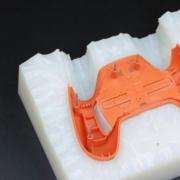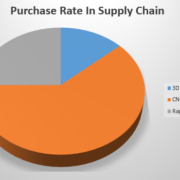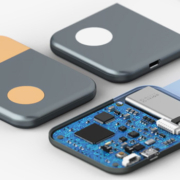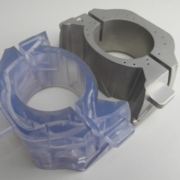Additive Manufacturing Is Different from Traditional Manufacturing
Additive manufacturing is a strong force transforming the way parts and products are manufactured across a wide range of sectors. Many believe it is difficult to detect the difference between additive manufacturing and more traditional production processes. In this blog, we’ll go over some of the differences between additive manufacturing and other traditional manufacturing methods. For that’ let’s first start with the features of additive manufacturing that makes it different from traditional manufacturing methods physically.
What is it about Additive Manufacturing that distinguishes it physically?
Additive manufacturing is a technique that involves building up layers of material to create an item. On the other hand, subtractive manufacturing procedures are common in traditional manufacturing. It is possible to fabricate the desired form by subtractive producing components from a large block of material. Using a subtractive method to cut the wood into usable forms, for example, is a very basic example of how to do anything.
Even though all additive manufacturing includes the layer-by-layer construction of things, there are many distinct forms of additive manufacturing. Companies utilize fused deposition modeling to swiftly build plastic components, whereas direct metal laser sintering links layers of metal powder together to create more complex metal parts.
Creating Complex Geometries
The fundamental physical difference in how items are created via additive manufacturing results in some significant functional variations. Of these functional distinctions, the most significant is the ability to produce complicated geometries using additive manufacturing, which would be difficult or impossible to do with traditional production processes. These complicated geometries are often stronger and lighter than their conventionally made equivalents, a significant advantage.
One of the most important aspects of additive manufacturing’s capacity to produce complicated geometries more quickly and easily than traditional production processes is that it avoids the extra expenditures that are generally involved with producing more complex products. When using traditional techniques, it is common for a very complicated item to cost much more to manufacture than a relatively basic part. However, with additive manufacturing, the procedure is the same regardless of the complexity of the manufactured component. As a result, the increased expense is no longer a consideration.
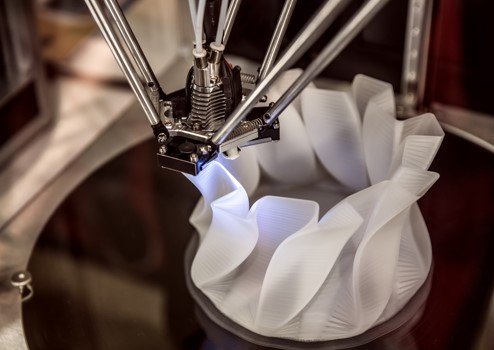
Other Differences in Functionality
Another significant functional distinction between additive manufacturing and traditional manufacturing techniques is that additive manufacturing produces far less waste material than traditional manufacturing methods. Additive manufacturing employs just the amount of material required to construct an item, resulting in very low levels of waste.
When we remove a material waste result from a subtractive manufacturing process, we are rendering it as trash. Materials wasted by printing parts that need support structures will still account for a significant portion of the total material waste.
Traditionally, businesses have had to create each component of an assembly separately and then put them together afterward. As an alternative, we may integrate manufacturing and assembly processes into a single process with the help of 3D printers. It is also feasible to print whole moving assemblies using additive manufacturing techniques.
The fact that additive manufacturing may be utilized to build bespoke items readily is a last significant functional distinction between additive manufacturing and other production processes. Mass production processes, which are now in use by many corporations, produce enormous quantities of similar items while leaving little potential for individualization.
In contrast, since they can print items in any configuration from scratch, 3D printers are ideal for creating unique goods. Normals, a firm that sells customized earphones tailored to the shape of each customer’s ears, is one well-known example of a brand that uses this feature.
Differential Requirements for the Equipment
When it comes to the technology that we utilize to make additive manufacturing possible, it varies from traditional production processes in several ways. Traditional manufacturing processes may often include numerous phases, each requiring special equipment. In metal machining, for example, the operations of turning, milling, and drilling are typically performed in conjunction to produce a completed metal item. In additive manufacturing, on the other hand, a single device is responsible for all stages of the creation process.
Therefore, additive manufacturing is less labor-intensive than traditional manufacturing. Using 3D printers to build components, operators may work with no monitoring since the process is automated. A distinct expert employee is required to run each unique machine in traditional production instead of modern manufacturing.
Differences in Business Applications
Increased access to entrepreneurship and product creation is made possible with additive manufacturing. Businesses can prototype and manufacture their goods with a single piece of equipment, rather than investing in a whole factory set up, thanks to 3D printers. Indeed, thanks to the proliferation of rapid prototyping service companies that have popped up in recent years, small businesses are now able to take advantage of additive manufacturing without facing the high initial expenses associated with owning the required equipment.
Customization is a simple approach for companies to offer value while also improving the customer experience. It has also enabled numerous firms to develop customized items for their clients due to the relatively easy customization that can be accomplished via additive manufacturing. Furthermore, 3D printers greatly minimize the expenses associated with personalization.
Conclusion
So, that’s what makes additive manufacturing different from traditional manufacturing. Decentralization is, without a doubt, the most significant distinction between additive and traditional production. Localization allows us to install 3D printing equipment that enables additive manufacturing on a smaller scale instead of huge, centralized facilities. With this concept, firms may reduce the length of their supply chains while also lowering the expenses connected with transportation logistics.
As an added benefit, decentralized manufacturing is advantageous for firms that operate in distant areas, such as oil companies, since this style of manufacturing allows for the provision of replacement parts much more swiftly than is feasible with centralized production. These fundamental distinctions distinguish additive manufacturing from the vast majority of traditional production methods.

